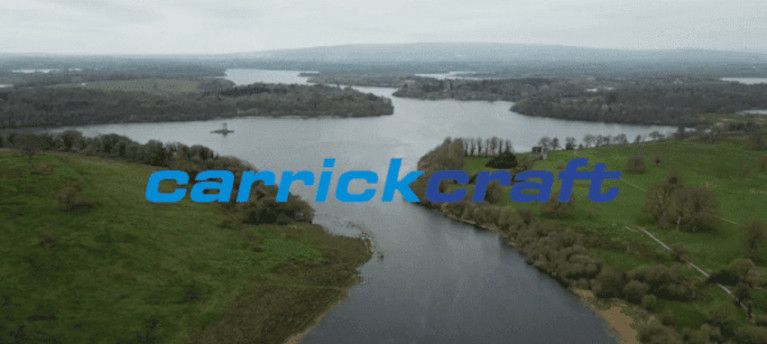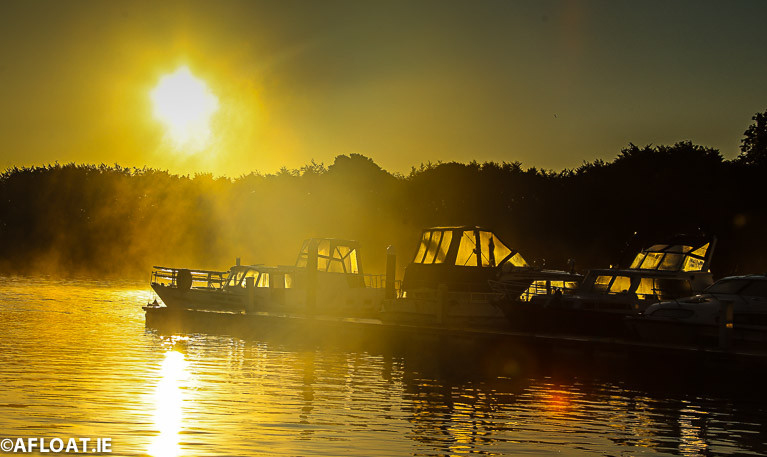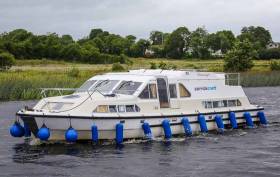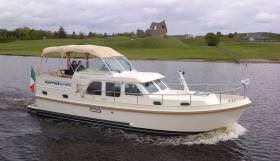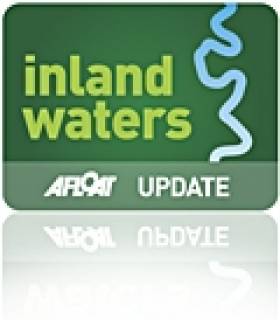Displaying items by tag: Carrickcraft
Carrickcraft Changing Its Cruising Fleet to HVO Sustainable Biofuel
Citing efforts to lower its environmental impact on the inland waterways, Carrickcraft says it will be changing its entire fleet from diesel to HVO biofuel from the start of the 2024 cruising season.
HVO is a sustainable, low-carbon replacement for diesel oil, recently trialled by the Dublin Port Company to fuel one of its pilot boats.
Carrickcraft claims that the use of HVO will reduce its fleet’s emissions by 92 per cent, while also improving boat performance and reliability.
“You can now hire a boat with Carrickcraft knowing that you are contributing in a positive way to a more sustainable environment,” the Co Armagh-based cruising firm says.
It’s also offering an extra night free on its larger boats in Fermanagh and Waterford for bookings starting before 31 May (offer ends 29 February).
Carrickcraft has announced that with the relaxation of COVID-19 restrictions in Northern Ireland, it will start operating for the 2021 cruising season on Lough Erne from Friday 30 April.
The cruising firm’s website features a sample itinerary of the attractive sights and mooring points around Upper and Lower Lough Erne, from Enniskillen to Devenish Island, Belleek and Crom Castle, to name a few.
Home-holidaying families (and their four-legged members, as dogs as welcome, too) can enjoy these inland waterways from any of an extensive fleet of two- to 10-berth cruisers, which can be browsed on the Carrickcraft website.
Lough Erne Charter Boat Firm To Reopen on June 5th
Cruise Ireland, the umbrella brand for Locaboat, Carrickcraft, Waveline and Linnsen Boating holidays, says it will open for business on the 5th June on Lough Erne following the easing of COVID-19 restrictions in Northern Ireland.
It follows the Waterways Ireland notice that says the Erne and Lower Bann will reopen from May 29th as Afloat report here.
Cruise Ireland say 'We are looking forward to seeing all our friends again. A boat has always been the perfect place to get away from it all, but this year even more so. We will, of course, be practising best hygiene with social distancing at the marinas, and we will endeavour to get you on your way as quickly as possible".
Carrickcraft, the leading River Shannon Cruiser-Hire firm, expects to reopen its boat rental business from 20th July and aims to tap into the 'staycation' market as many Irish people are worried about flying abroad this summer due to COVID-19.
'A boat has always been the perfect place to get away from it all, but this year even more so', the firm says.
The firm that operates from bases on the rivers Shannon or Erne has a wide variety of craft available for short or long cruises as Afloat's David O'Brien find out in a three-day cruise through Roscommon in search of the Moone Boy Burger in 2017.
Carrickcraft says 'We will, of course, be practising best hygiene with social distancing at the marinas, and we will endeavour to get you on your way as quickly as possible'.
The July date also sees Cruise Ireland companies Locaboat, Waveline and Linssen boating holidays also reopen on the river.
Locaboat Acquire Majority Stake in Carrickcraft
French boating holiday firm Locaboat Developpement has announced its acquisition of a majority stakeholding in Irish cruiser-hire company Carrickcraft.
Locaboat is a market–leading, boating holidays company which operates 360 boats in six countries from some 27 bases throughout Europe.
Acquired by John Morton in 1999, Carrickcraft has continued to grow steadily and consistently. It is the largest provider of self-drive boating holidays in Ireland.
Company growth has accelerated further following the acquisition of Waveline Cruisers in 2014.
The current owners of Carrickcraft will remain as Directors and shareholders and will continue to run the company in Ireland as at present. Sales and accounting remain in Markethill and there are no changes at any of the marinas. Hausboot Irland, the German booking company, will continue to operate as normal from offices in Untergruppenbach.
Commenting on the acquisition Serge Naim, Managing Director of Locaboat Developpement, “Carrickcraft has an impressive growth record, an excellent reputation for service and a highly respected team. We are excited to be joining forces. This is a strategic acquisition opening new possibilities and strengthening market presence. We look forward to helping Carrickcraft accelerate its expansion plans”.
John Morton, Managing Director of Carrickcraft said: “this partnership with Locaboat will enable Carrickcraft to develop more rapidly, and allow greater investment opportunities. The company has an extremely bright future under its new ownership. I am confident that Carrickcraft will continue to develop and grow in partnership with Locaboat.”
Carrickcraft operate 119 boats on the River Shannon at Carrick-on-Shannon and Banagher and on Lough Erne from Bellanaleck, outside Enniskillen. The Shannon and Erne are recognised as one of the longest non-commercial waterways in Europe, they are well maintained and simple to navigate. There are also very few locks, making this a popular destination for boaters.
The boats range in size from 2-berth to 10-berth and are easily handled by seasoned boaters and novices alike. The fleet has recently been enhanced with the addition of Linssen cruisers which have been very popular.
The core business is visitors from Germany, Austria and Switzerland, most of whom visit for at least one week and bring considerable inward spend. To improve the sales to these countries, Carrickcraft have a sales office near Stuttgart (Hausboot Irland GmbH) who handle all direct bookings from these countries.
Domestic Irish business has become more important in recent years as people have realised they have one of Europe’s finest cruising waterways on their doorstep. Although many come for shorter breaks, a lot of visitors return year after year.
With its first hire this Saturday, River Shannon Boat hire firm Carrickcraft is launching the first of its new steel–built Linssen vessels just in time for the 2017 season.
As Afloat.ie reported earlier, Ireland's largest cruise hire charter company is expanding its 115–boat fleet with the addition of five Dutch built boats over the next few seasons.
The first of these new steel yachts was on trial this week as pictured above at Clonmacnoise in Co. Offfaly.
Cruise-Ireland placed an order at Linssen Yachts for five new yachts, which involves a turnover of more than €1m. The aim of this long-term collaboration is to extend the Cruise-Ireland fleet with several new Linssen Yachts every one or two years. Cruise-Ireland is a combination of two of the oldest yacht charter companies in Ireland: Carrickcraft and Waveline Cruisers.
New boats will go into the Cruise-Ireland bases in Banagher, two in Carrick and one on the Shannon one-way route.
Carrickcraft Launches New Holidays on Lower Bann
Ireland's largest cruiser hire company is set to move into waterways north of the border next year.
Carrickcraft – which for 30 years has provided cruising holidays on the Shannon and the Erne - has plans to operate a small fleet of hire-boats on the Lower Bann in 2012.
The company will initially operate three Kilkenny Class cruisers (2 + 4 berth) and three Carlow Class cruisers (2 + 2 berth) from new pontoons at Coleraine Town Centre Marina.
According to Carrickcraft, a seven-day holiday on the Bann would allow travellers to see all of the river and have some extra time to discover the hinterland.
Carrickcraft MD John Morton said: “We are delighted to be able to open a fourth Irish base and to bring more tourists to the region. We are fully committed to the project and hope to increase the fleet size in the future.
"Having travelled along the Lower Bann myself, it is great to be able to open up such a wonderful waterway to a larger public.”
The first boats will arrive early in the New Year ahead of the summer season from March to October 2012.
For booking enquiries contact the sales office at 028 3834 4993. For more details visit www.cruise-ireland.com.


























